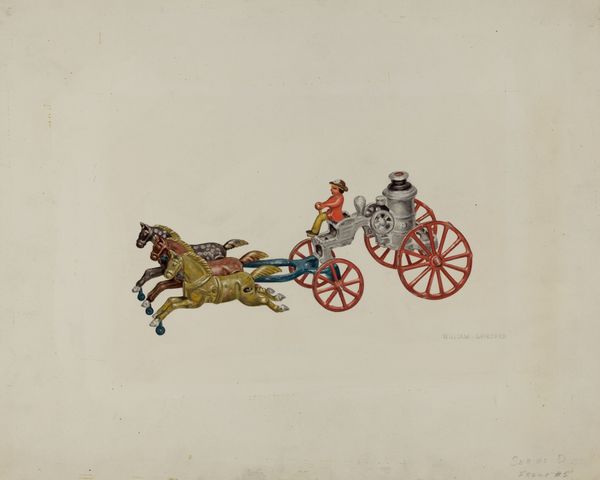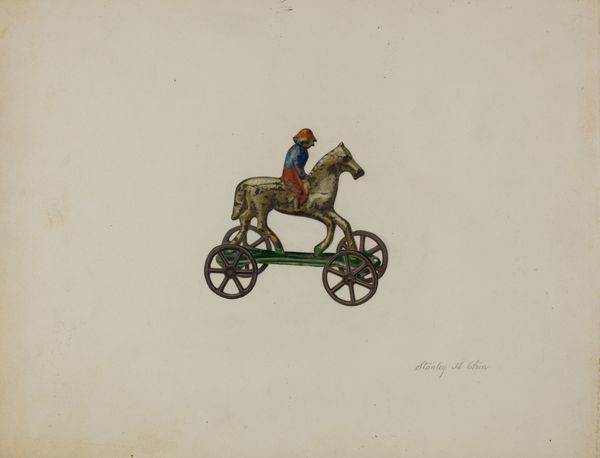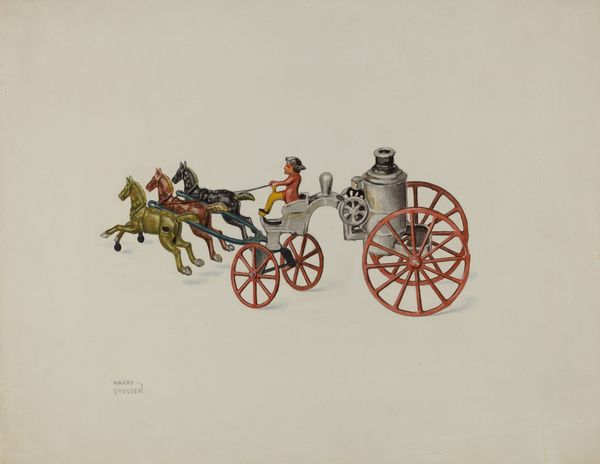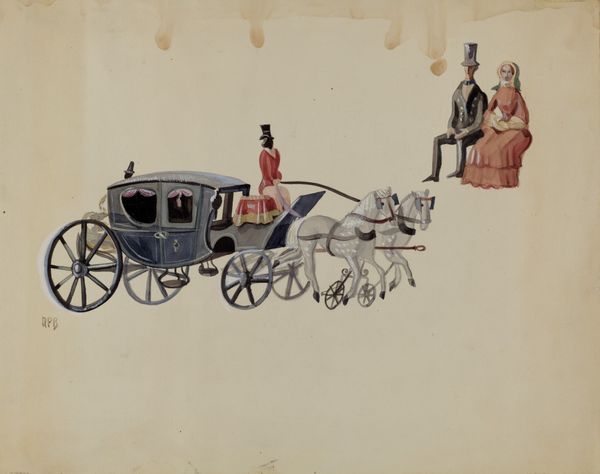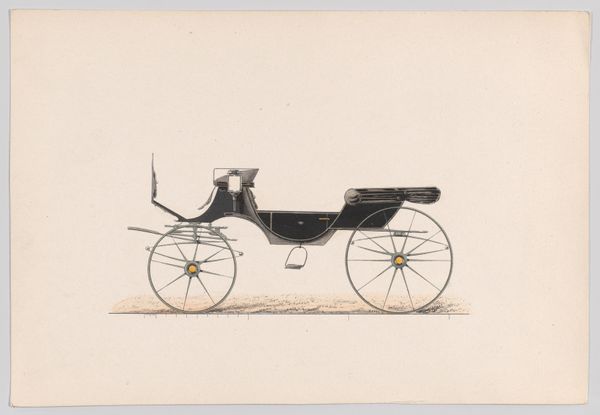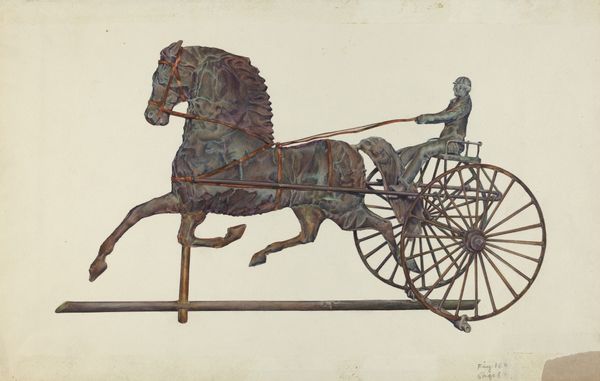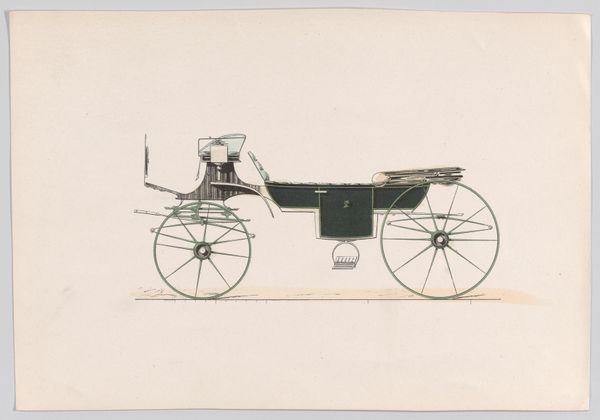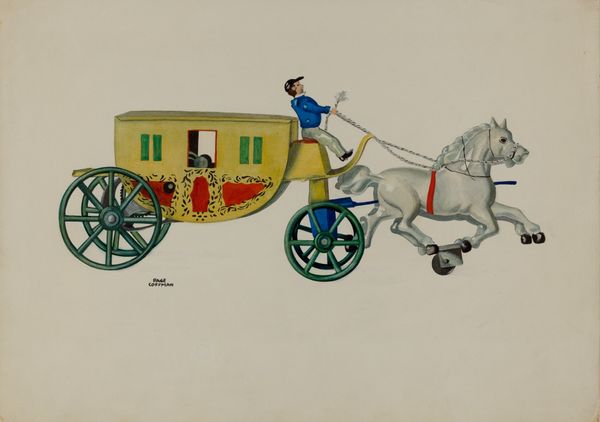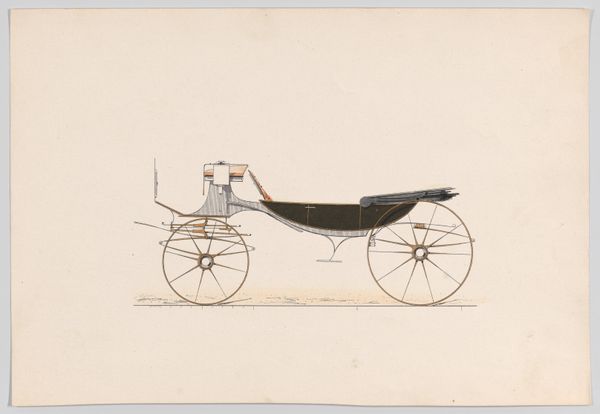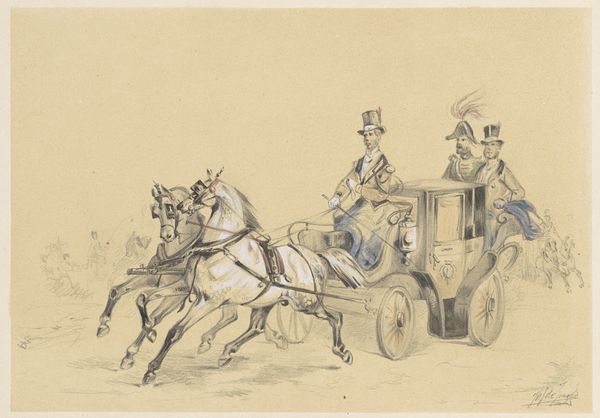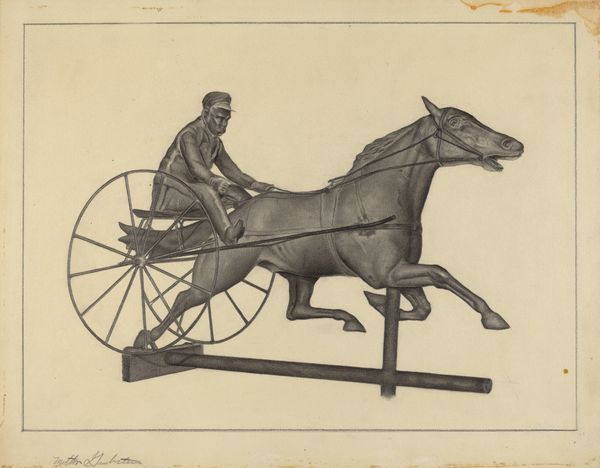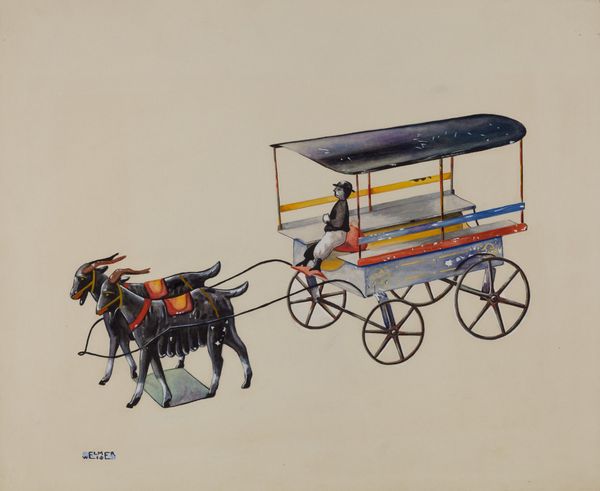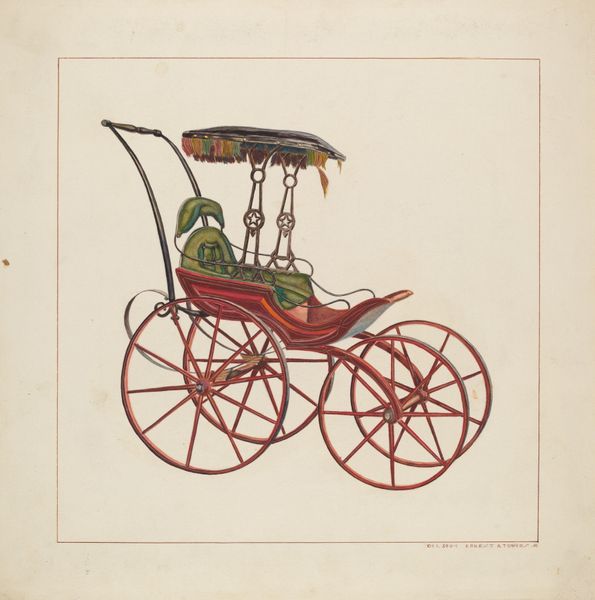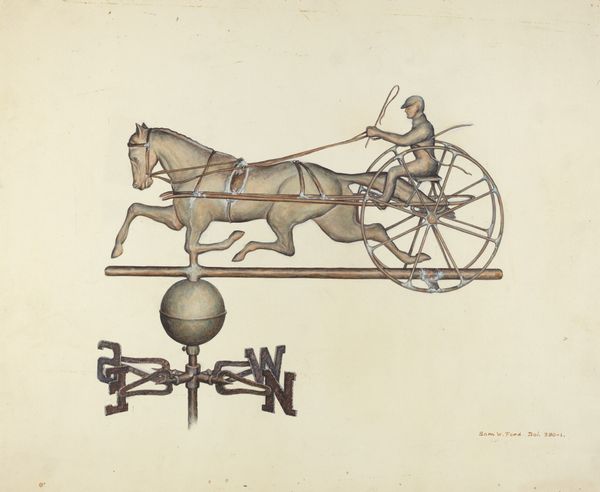
drawing, pencil, graphite
#
portrait
#
drawing
#
figuration
#
pencil drawing
#
pencil
#
graphite
#
miniature
Dimensions: overall: 40.4 x 30.4 cm (15 7/8 x 11 15/16 in.) Original IAD Object: 9 1/2" high; 4 1/2" wide
Copyright: National Gallery of Art: CC0 1.0
Curator: This pencil and graphite work, titled "Trotter and Gig Iron Toy," was created around 1939. It is part of a larger collection of drawings by George File. What's your initial read on it? Editor: There is something quite charming in its stillness. The blank background focuses my attention completely on the forms of the trotter, the gig, and the solitary driver. Despite its subject, I find a lack of dynamic energy in the work. The muted tones further give it a serene feeling. Curator: I see that stillness as reflective of its origin: it depicts an iron toy, after all. Iron toys held a special place, becoming symbols of industrial progress and idealized childhood during that era. There's a powerful evocation of that past—a kind of golden age—when simpler manufactured objects held great cultural weight. Editor: Yes, and the technique certainly contributes to that sentiment. I'm particularly interested in the rendering of the horse; the cross-hatching emphasizes the solidness of the metal toy and simulates its shadows. Notice too, how the perspective seems somewhat flattened, compressing the space between the horse, the gig, and driver. Curator: Right, the formal simplicity also belies a sophisticated kind of symbolism. A horse-drawn vehicle references back to times before the automobile age. There is this blending of the past—agricultural, pre-industrial labor—and the increasing dominance of manufactured items. What's interesting, too, is that even as mass-produced items rose in popularity, miniature models captured the desire for more controllable realities, little manageable worlds. Editor: I think you've touched on an important aspect of its appeal, as it provides us with a controlled snapshot, an item that suggests the relationship of human labor with mechanization. The artist's chosen color scheme and texture of materials enhance those effects. Curator: Indeed. The charm here resonates as both an artistic interpretation, and a cultural artifact, allowing us a window into the values and material culture of a specific time. Editor: It gives us quite a lot to unpack for something so outwardly straightforward. I think its formal properties enhance those cultural echoes effectively.
Comments
No comments
Be the first to comment and join the conversation on the ultimate creative platform.
